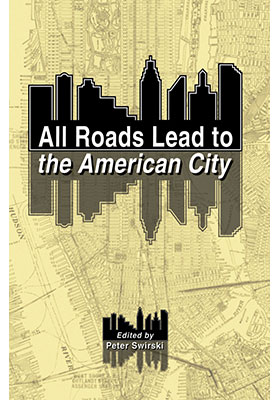All Roads Lead to the American City
(條條大道通美國)
ISBN : 978-962-209-863-3
April 2007
162 pages, 6″ x 9″
Ebooks
Also Available on
All Roads Lead to the American City provides an original view of the urban culture in America seen through its irrevocable ties with the cities and roads. Examining the history, cinema, literature, cultural myths and social geography of the United States, the book puts some of the greatest as well as the “baddest” American cities under the microscope. Taking the role of the roads that crisscross and connect the cities as their shared point of reference, these essays explore ways to understand the people who live, commute, work, create, govern, commit crime and conduct business in them.
Cities, for the most part, are America. Their values and problems define not only what the United States is, but what other nations perceive the United States to be. Roads and transportation, on the other hand, and their impact on the American culture and lifestyle, form not only the integral part of the historical rise-and-shine of the modern city, but a physical release from and a cultural antidote to its pressure-cooker stresses. Tracing the boundless variety and complexity of these twin themes, All Roads Lead to the American City is built around an interlinked series of essays on the urban culture in America. Juxtaposing the city and the road, it looks alternatively at cities as historical, geographical, social and cultural centres of life in the land, and at roads as physical as well as metaphorical arteries that lead in and out of the city.
“Without getting caught up in a limited problematic or a narrow theoretical jargon, All Roads Lead to the American City taps the insights of many fields in order to show how intimately bound up the reality and the image of the road and the city are with the American sense of the nation. The authors move smoothly from text to history to synthesis, and back again. Taken as a whole, it makes a contribution to American Studies.” —Davd Grant, English Department, Grant MacEwan College
“This collection of papers contains tons of valuable information and much lively writing. Its strengths are its accessibility, its juxtaposition of materials, and its historical sweep.” —Christine Bold, Professor, School of English and Theatre Studies, University of Guelph





